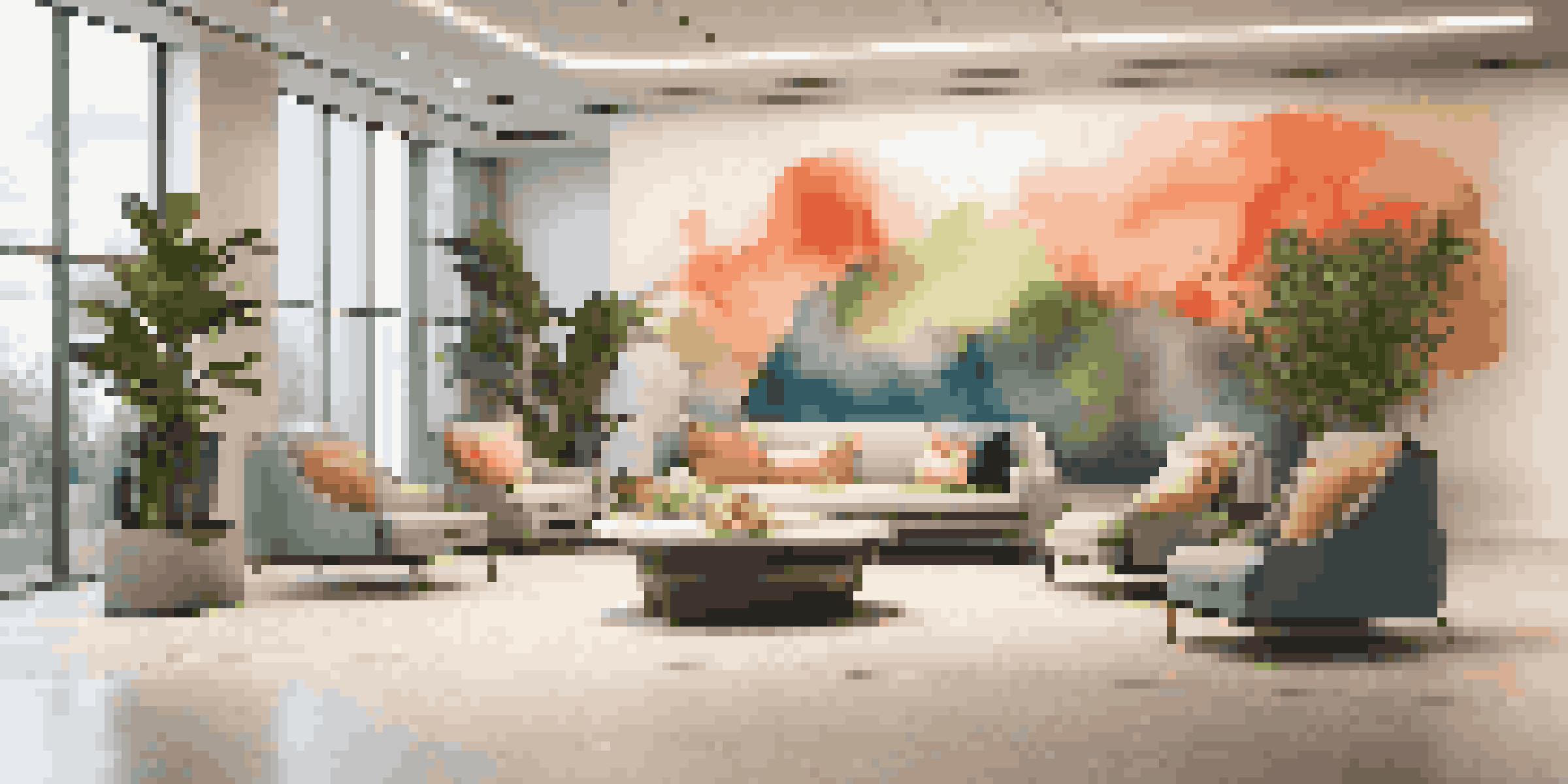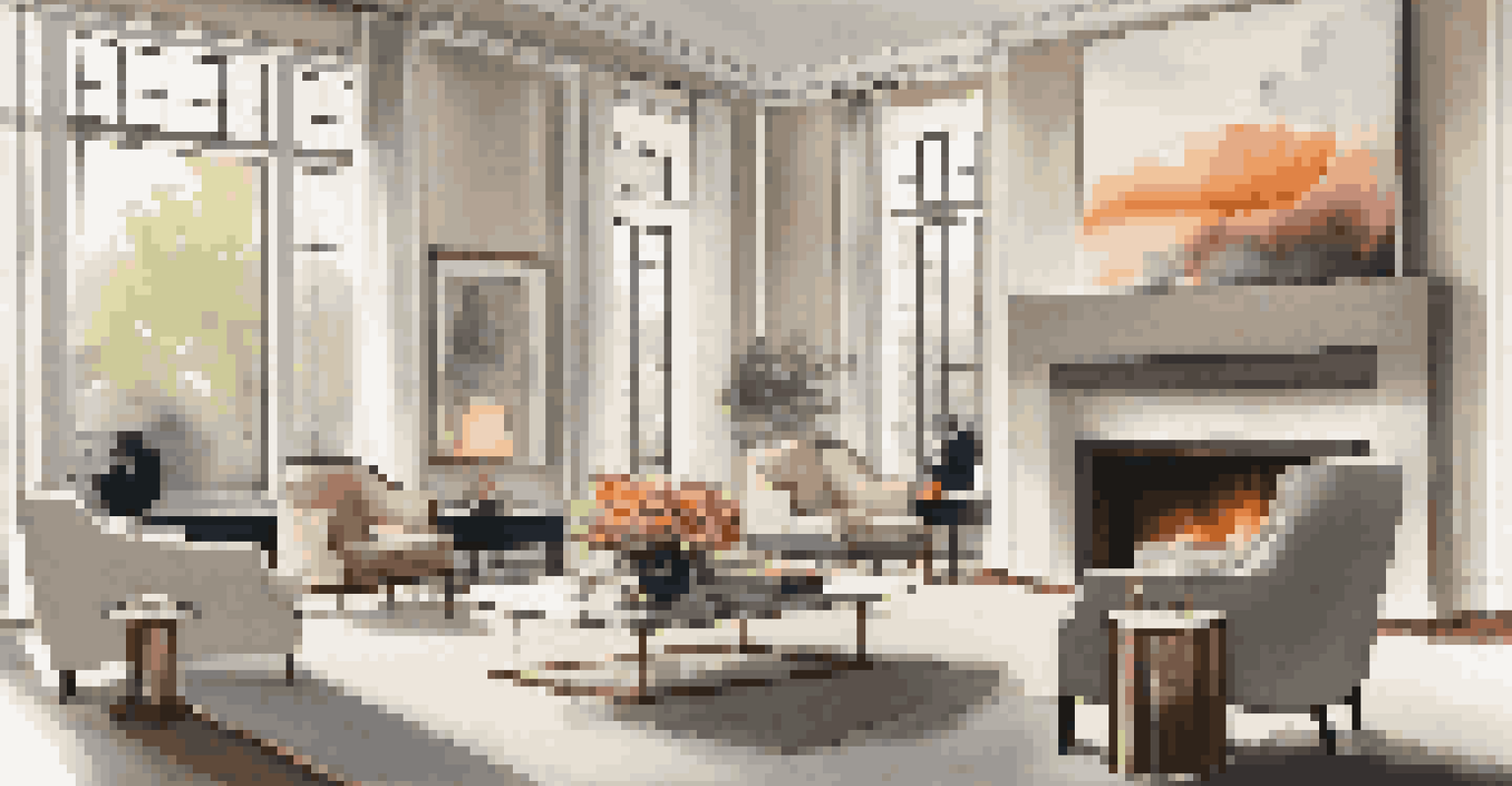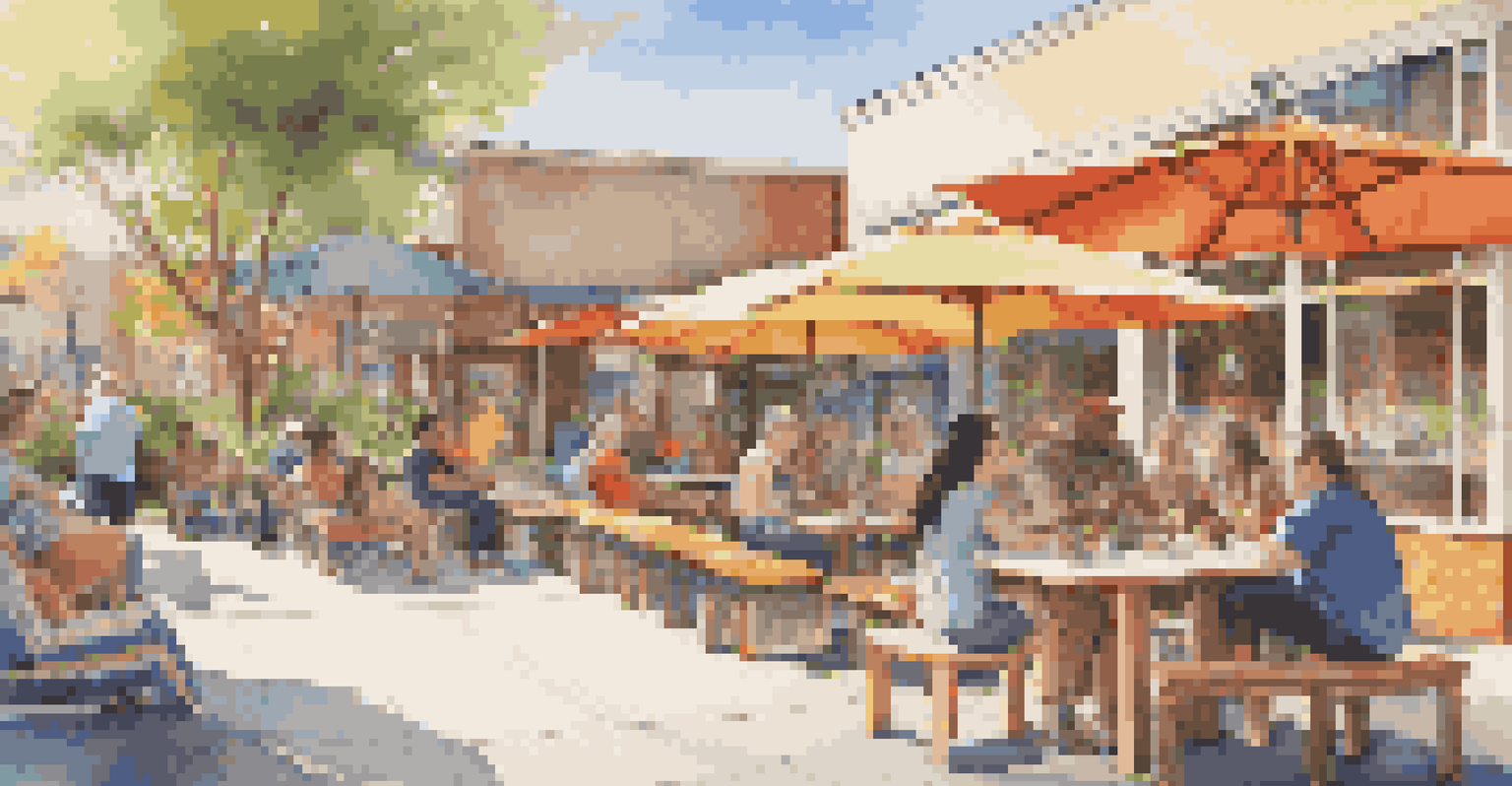The Intersection of Art Collecting and Real Estate

The Growing Trend of Art in Real Estate Investments
In recent years, art collecting has become an integral aspect of real estate investments. Property owners are increasingly recognizing that art can significantly enhance the value and appeal of their spaces. For instance, a stunning piece of art in a lobby can transform a mundane entryway into a conversation starter, attracting potential buyers or tenants.
Art is not what you see, but what you make others see.
This trend reflects a broader cultural appreciation for art and design. As people spend more time in their homes and workplaces, they seek environments that inspire and uplift. This desire for aesthetically pleasing spaces makes art a valuable asset in the real estate market, blending investment with personal expression.
Moreover, art can serve as a unique selling point in real estate listings. When a property is showcased with curated artworks, it tells a story, creating an emotional connection that resonates with buyers. This narrative aspect of art can elevate a property’s marketability, making it stand out in a competitive landscape.
How Art Enhances Property Value and Appeal
Art has the power to enhance not only the aesthetics of a property but also its overall value. Properties adorned with high-quality artwork can command higher prices, as potential buyers often perceive these homes as more luxurious and desirable. Just like a well-staged room, art can create an inviting atmosphere that draws people in.

In addition, certain types of art can appreciate over time, much like real estate itself. Collectors often view their art as an investment, and when that art is displayed in a property, it can contribute to the overall investment strategy. For instance, a property owner might purchase a contemporary piece that appreciates significantly, thus increasing the property’s worth.
Art Boosts Property Value
High-quality artwork can significantly enhance a property's appeal and market value, making it more desirable to potential buyers.
Furthermore, art can differentiate a property in a saturated market. Unique collections or pieces can create a memorable impression, making it easier for a property to retain its value over time. This creativity in presentation not only attracts buyers but can also foster a sense of community among residents.
Creating Engaging Spaces Through Art
Art has an uncanny ability to transform spaces into engaging environments. Whether it’s a vibrant mural in a commercial space or carefully selected pieces in a residential setting, art invites interaction and engagement. This is particularly valuable in real estate, where the goal is often to create a welcoming atmosphere.
Every act of creation is first an act of destruction.
For example, developers might incorporate local artists' works into their projects, celebrating the community's culture and fostering a sense of belonging. This approach not only beautifies the space but also supports local talent, creating a positive relationship between the property and its surrounding area.
Moreover, art can evoke emotions and provoke thoughts, enriching the experience of those who inhabit or visit a space. This emotional connection can lead to higher satisfaction rates among tenants or buyers, making them more likely to recommend the property to others, thereby enhancing its reputation in the market.
The Role of Art in Home Staging and Selling
When it comes to selling a property, home staging is a critical component, and art plays a pivotal role in this process. Real estate agents often advise sellers to use art strategically to highlight a home’s best features and create a cohesive look. A thoughtfully placed piece can draw attention to architectural details or create focal points in a room.
By using art during staging, sellers can also help potential buyers envision themselves in the space. Art that resonates with a target demographic can evoke feelings of comfort and aspiration, making it easier for buyers to imagine their lives within the property. This emotional connection can be the difference between a quick sale and a property sitting on the market for months.
Art Enhances Buyer Experience
Strategically placed art in staged homes creates an emotional connection, helping buyers envision themselves in the space.
Additionally, art can serve as a conversation starter during open houses. A unique piece might catch a visitor's eye, prompting discussions that not only build rapport with potential buyers but also highlight the property’s unique character. This can ultimately lead to a more favorable impression and a quicker sale.
The Investment Perspective: Art as an Asset
From an investment standpoint, art is increasingly being recognized as a viable asset class. Just like real estate, art can appreciate over time, making it an attractive option for collectors and investors alike. Many savvy investors are now looking to diversify their portfolios by including fine art, viewing it as a way to hedge against market fluctuations.
Moreover, art investments can provide tax benefits that real estate investors may find appealing. Depending on the jurisdiction, collectors may be able to deduct certain expenses related to their art collection, further enhancing its investment potential. This financial aspect is a compelling reason for real estate investors to consider art as part of their strategy.
Ultimately, the intersection of art collecting and real estate presents opportunities for growth and diversification. By recognizing art as an asset, investors can not only beautify their properties but also create a more robust investment portfolio, blending aesthetics with financial strategy.
Challenges of Integrating Art with Real Estate
While the benefits of integrating art into real estate are numerous, there are also challenges to consider. For one, the cost of acquiring high-quality art can be significant, which might deter some property owners. Balancing the budget for art purchases with other property expenses is crucial to ensure that the investment remains viable.
Additionally, there’s the challenge of selecting the right pieces that resonate with prospective buyers or tenants. Not every artwork will appeal to everyone, and mismatched tastes can alienate potential investors or residents. It’s important for property owners to curate collections that reflect the intended audience and the overall vibe of the property.
Art as an Investment Asset
Art is increasingly recognized as a viable investment, offering potential appreciation and diversification for real estate investors.
Lastly, issues of art maintenance and preservation can arise. Properties that host valuable art need to ensure that the pieces are protected from damage, which may require additional investment in security and environmental controls. Addressing these challenges is essential for maximizing the benefits of art in real estate.
Future Outlook: The Evolving Relationship of Art and Real Estate
As we look to the future, the relationship between art collecting and real estate is expected to evolve even further. With the rise of technology, virtual and augmented reality are beginning to change how art is displayed and experienced in real estate. Imagine touring a property and being able to visualize how different pieces of art would look in the space using VR tools.
Moreover, online platforms for buying and selling art are becoming more accessible, democratizing art collection for a broader audience. This shift can lead to more property owners incorporating art into their spaces, as they can easily source unique pieces that fit their style and budget.

Ultimately, the synergy between art and real estate will continue to grow, reflecting broader cultural trends and the changing dynamics of investment. As both industries evolve, they will likely find new ways to collaborate, creating spaces that not only house art but also tell stories and foster community.